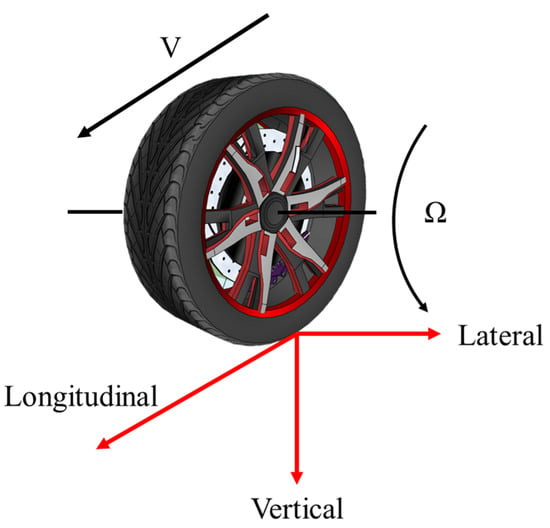Your browser does not fully support modern features. Please upgrade for a smoother experience.
Please note this is an old version of this entry, which may differ significantly from the current revision.
Subjects:
Transportation Science & Technology
轮胎与路面接触问题是路面工程领域的重要问题之一。轮胎与路面的接触行为对于了解路面防滑性、噪音、滚动阻力以及驾驶安全性和舒适性等问题至关重要。
- tire–pavement
- contact behavior
- pavement engineering
1. 引言
轮胎-路面接触涉及摩擦学[10]、声学[11]、接触力学[12,13]、轮胎动力学和其他多学科领域[14],在路面工程领域引起了广泛的兴趣。轮胎与路面接触过程也是路面防滑性恶化[15,16]、路面病害形成[17]和轮胎性能下降[18]的过程。因此,研究轮胎与路面的接触行为对于改善路面性能、延长路面寿命、增强车辆节能环保具有重要意义[19\u201220]。此外,只有清楚地了解轮胎与路面的相互作用,才能获得真实的接触应力和路面荷载分布数据。只有这样,我们才能设计出更经济、更耐用的路面,并进行摩擦分析。
目前,轮胎与路面接触行为的研究方法主要有两种:一种是接触实验研究,通过试验分析轮胎与路面接触特性,但这些试验难以进行,直到最近几年才有相关研究。一些研究人员使用压力传感器[21]、复写纸[22]和压敏材料[23]来测试压力分布。第二种研究方法是理论研究,研究人员通过数学模型分析轮胎与路面的接触行为。后来,随着计算机技术的发展,许多研究者通过基于理论研究的数值分析技术研究了轮胎与路面之间的相互作用[24,25,26]。有限元分析方法可以快速高效地建立轮胎和路面模型,并准确、经济地分析轮胎与路面的接触,但仿真和现实之间存在差异[27]。实验研究可以真实反映轮胎与路面的接触行为,但这些试验存在成本高、外部环境影响等问题[1,13]。虽然轮胎与路面的接触行为及其对路面的影响已经得到了一定程度的了解,但接触特性仍存在争议,对路面的影响规律仍不明确。一些研究人员对轮胎与路面接触行为进行了数值模拟和实验研究,但缺乏详细和完整的总结和概括。
2. 轮胎-路面接触特性
据了解,轮胎与路面的接触行为有助于优化轮胎设计和路面结构设计。这有助于提高路面性能和轮胎的整体性能。研究人员通过轮胎-路面接触特性表征了轮胎-路面接触行为[2,28]。轮胎-路面接触特性主要是根据接触面积定义的几何特性和根据应力分布定义的机械特性[29\u201230]。由于研究对象和方法的差异,轮胎-路面接触特性的定义、理解和应用因研究对象而异。
2.1. 几何特性
轮胎-路面接触的几何特性主要是指接触面积和接触形状。在路面工程领域,接触特性没有明确的定义;但是,轮胎与路面接触的几何特性在轮胎领域进行了总结和定义,《轮胎术语及其定义》(GB/T 6326-2005)[31]定义了胎面接触长度(L)、胎面接触宽度(W)、接触系数(L/W)、接触面积(C-A)和占地面积(F-A),如图1所示。

图 1.轮胎与路面接触的几何特性。
轮胎与路面的接触区域通常被认为是圆形或矩形,压力分布均匀。这可以简化力学计算,在一定程度上反映轮胎与路面的接触行为,在路面设计中得到广泛应用[32]。然而,测量和建模数据表明,轮胎-路面界面处的垂直应力分布不均匀,接触面积不是规则的圆形[29]或矩形[33,34]。在这种假设中,轮胎花纹和路面纹理的影响被忽略了,因此研究人员对接触几何特性进行了广泛的研究[35,36]。Pillai等[37]利用轮胎足迹确定轮胎-路面接触面积,根据轮胎挠度和轮胎胎侧的轮胎和车轮尺寸参数,得到了两个简单的轮胎-路面接触面积预测方程,如公式(1)和(2)所示,计算和测量的足迹面积之间的误差在15%以内。Ge和Wang[38]利用ABAQUS建立了轮胎-路面接触有限元模型,模拟了轮胎-路面接触过程,并得到了基于轮胎压力和车轮载荷的接触面积方程,如式(3)所示。获得了车辆负载下轮胎接触特性的定量表达式,如图2所示。
式中,A为轮胎足迹面积;r、s 和 a 分别是轮胎半径、车轮直径和纵横比;D为轮胎挠度。
其中 δ 是轮胎足迹面积,103毫米;p为胎压,Mpa;F为车轮载荷,kN。

Figure 2. Distribution map of the tire contact area.
Tielking et al. [39] found that the contact area between the tire and the pavement increases as the wheel load increases, and the effect of a single wheel load on the contact area is lower. Based on experiments, Weissman et al. [40] found that the width of the tire footprint remained essentially constant due to the stiffness constraint of the tire sidewall, and that the wheel load mainly affected the length of the tire footprint. Yu et al. [2] conducted a static tire–pavement contact test using super-low-pressure (LLW) Fujifilm Holdings Corporation (FUJI) pressure film paper. As the mean profile depth (MPD) increases, the actual tire–pavement contact area decreases, and as the tire load increases, the contact area gradually increases. However, when the tire load exceeds 250 N, the tire–pavement contact area does not broadly change and even shows a slight decrease. This is mainly because the contact width becomes larger when the load is too large but the contact length is significantly reduced. In summary, it can be seen that the geometric characteristics of tire–pavement contact are related to the wheel load, pavement texture, tire type, etc. Research has mostly used the footprint method for static tire–pavement contact geometric characteristic analysis, lacking dynamic contact studies, while more direct simplification is used in pavement design.
2.2. Mechanical Characteristics
Tire–pavement contact creates stresses and forces. These tire–pavement contact stresses and forces provide the driving force when the vehicle accelerates, the lateral force when it rotates, and the braking force when it decelerates, and it can be seen that the contact behavior is directly related to vehicle performance [41] and pavement performance [42,43]. Therefore, it is significant to conduct contact mechanical characterization studies. When a tire is in contact with pavement, the tire is subjected to a complex load through the complex deformation of the tread and carcass. This complex load is generally described in the study of tire–pavement contact dynamics as the six tire forces, which are vertical force, longitudinal force, lateral force, aligning torque, lateral tilt moment, and rolling resistance moment. Some of these forces are shown in Figure 3. Due to the large deformation of a tire in mutual contact with pavement coupled with the environment and load, these forces are coupled with each other and affect each other [39,44].

图3.接触应力示意图。
垂直力是路面研究中最关注的问题。Marshek等[45]试图用压敏膜测试对角线卡车轮胎的压力分布足迹,结果表明接触压力分布不均匀,胎肩处的接触压力明显大于轮胎气压。Wang等[46]分析了垂直接触应力的不均匀性,发现应力分布的不均匀性随载荷的增加而减小,而随充气压力的增加而增加。Gong等[47]使用高精度压力传感器测试了不同力下的轮胎-路面接触模式和应力,如图4所示。可以看出,随着力的增加,接触面积和应力集中区域逐渐增大。垂直接触应力的分布不均匀。

图4.接触应力分布图像。
This entry is adapted from the peer-reviewed paper 10.3390/coatings14020157
This entry is offline, you can click here to edit this entry!
